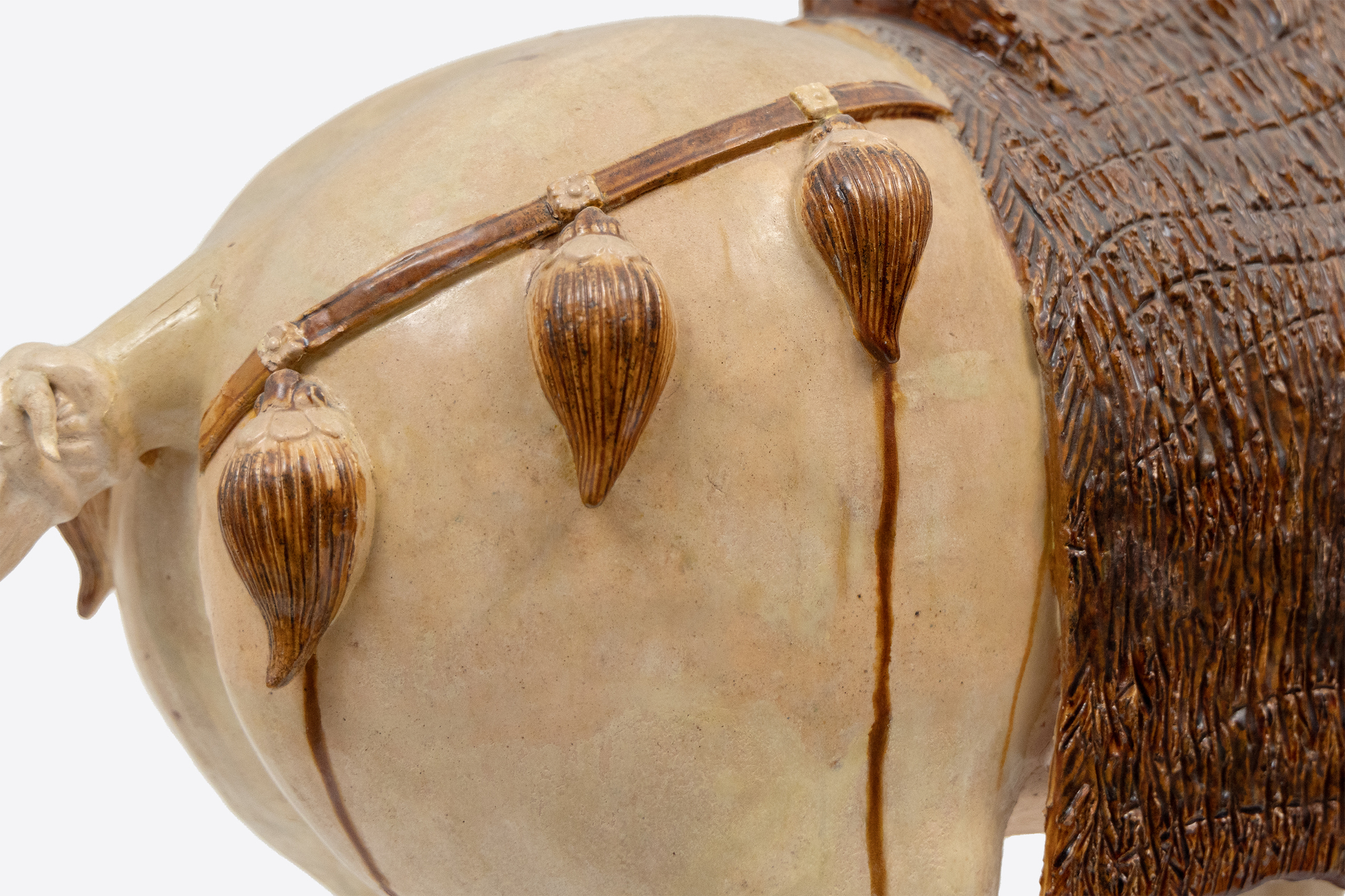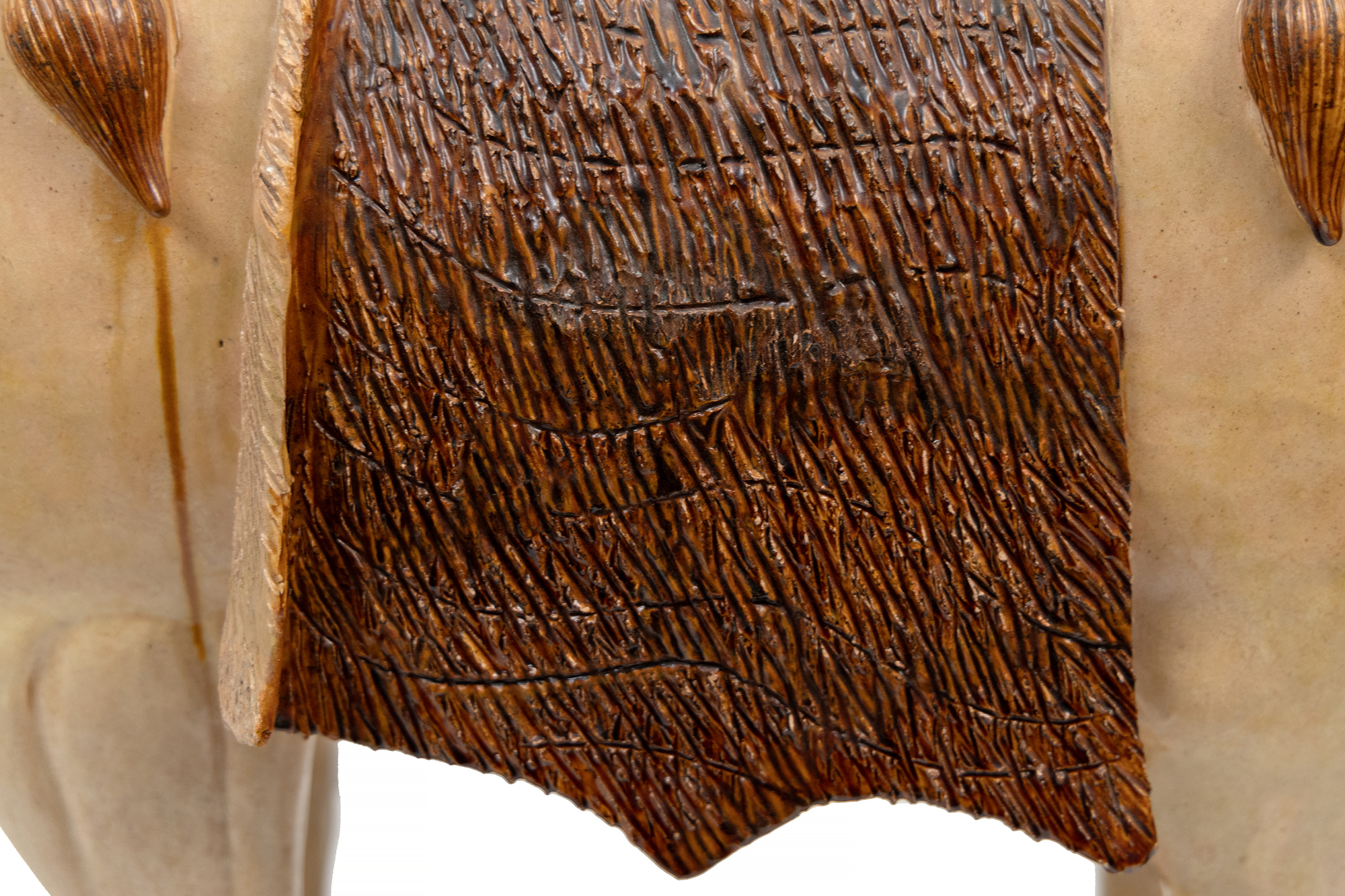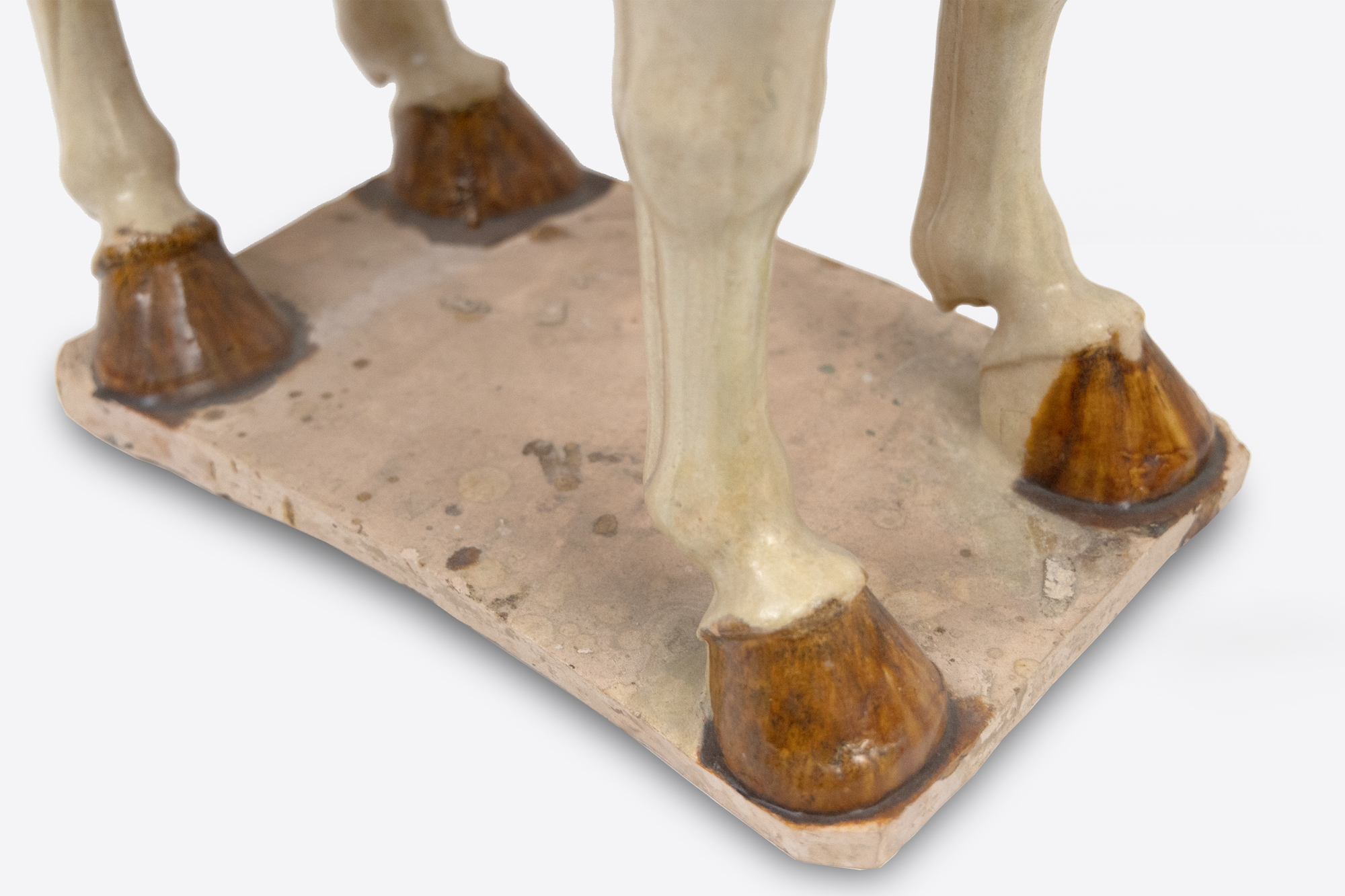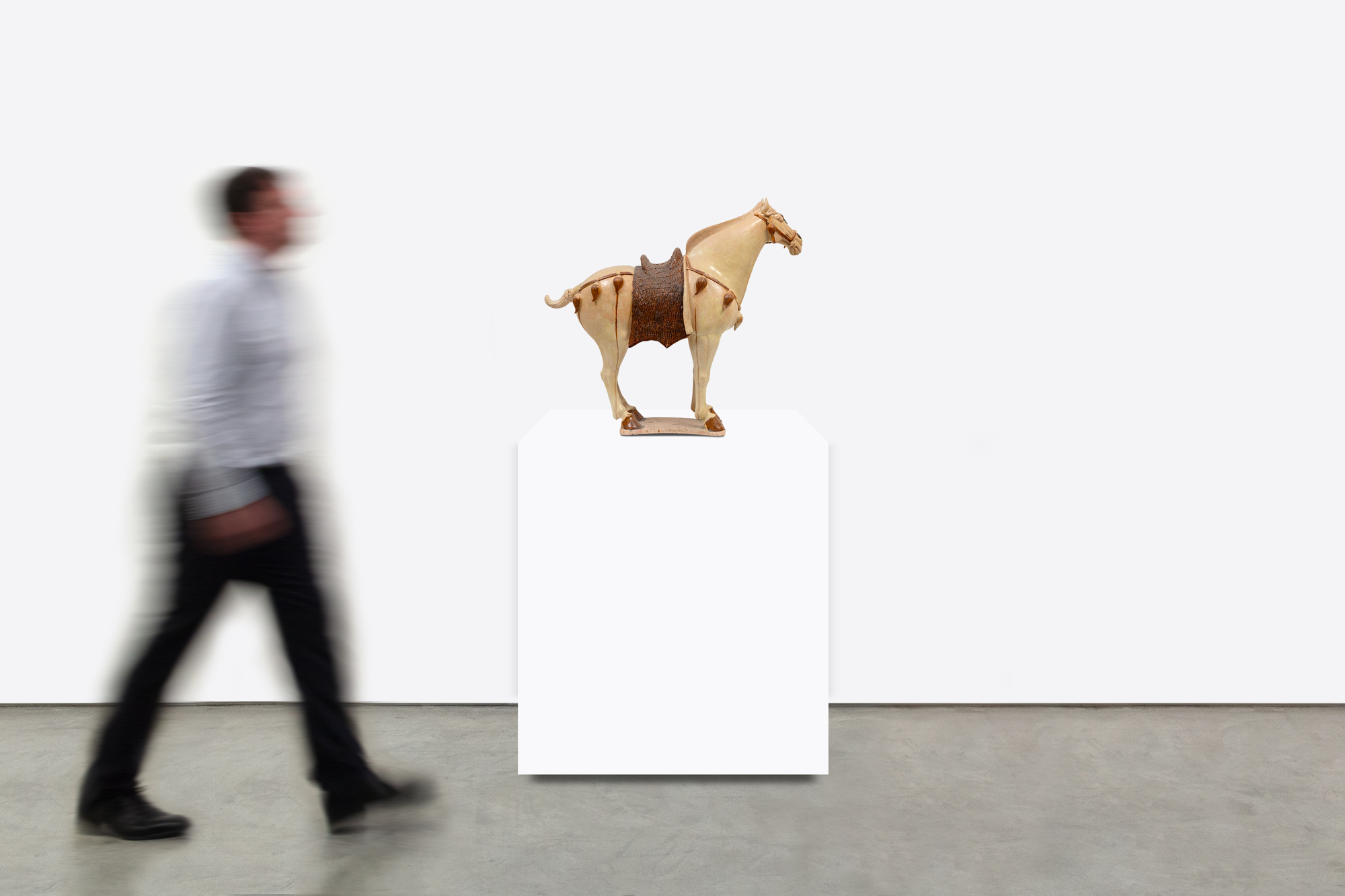CHINESISCH







Provenienz
Privatsammlung, KalifornienIn Übereinstimmung mit der jahrhundertelangen Tradition blieben die Bestattungsriten sehr wichtig. Es gab eine eigene Regierungsabteilung, die für die Überwachung der Herstellung von Grabbeigaben zuständig war. Offiziell gab es Begrenzungen für die Anzahl der Grabbeigaben und Beschränkungen für die Größe der Objekte, die den Verstorbenen begleiten durften, je nach Rang - die ranghöchsten Beamten durften maximal 90 Figuren haben, die nicht größer als 30 cm sein durften, während Mitgliedern der kaiserlichen Familie mehrere Hundert bis zu einer Höhe von etwa einem Meter erlaubt waren. Diese Regeln wurden jedoch häufig gebrochen. Die Verwandten des Verstorbenen glaubten, sie könnten den Status ihres Vorfahren im Jenseits verbessern, indem sie mehr Mingqi als nötig zur Verfügung stellten und so ihr eigenes Glück sicherten. Die figurative Keramik der Tang-Dynastie weist besondere Merkmale auf. Die Formen sind lebendig und lebensecht, die Themen decken alle Aspekte des sozialen und rituellen Lebens ab und der Maßstab der Figuren war relativ klein, mit Ausnahme einiger prächtiger größerer Werke, die für die Gräber der Elite in Auftrag gegeben wurden. Figuren von Höflingen und Unterhaltern, Polospielern und den exotischen Reisenden, die nun regelmäßig mit ihren großen Packkamelen in den chinesischen Städten ankamen, wurden alltäglich und veranschaulichen die kosmopolitische Natur der Zeit. Die Vielfalt der Formen zeigt, dass die Handwerker Spielraum für individuelle Innovationen hatten und nicht durch Regeln bezüglich bestimmter Stile kontrolliert wurden. Nun sprachen die Grabbeigaben nicht nur von Macht und militärischer Stärke, sondern auch von der Kultiviertheit und den intellektuellen Leistungen des Verstorbenen.


